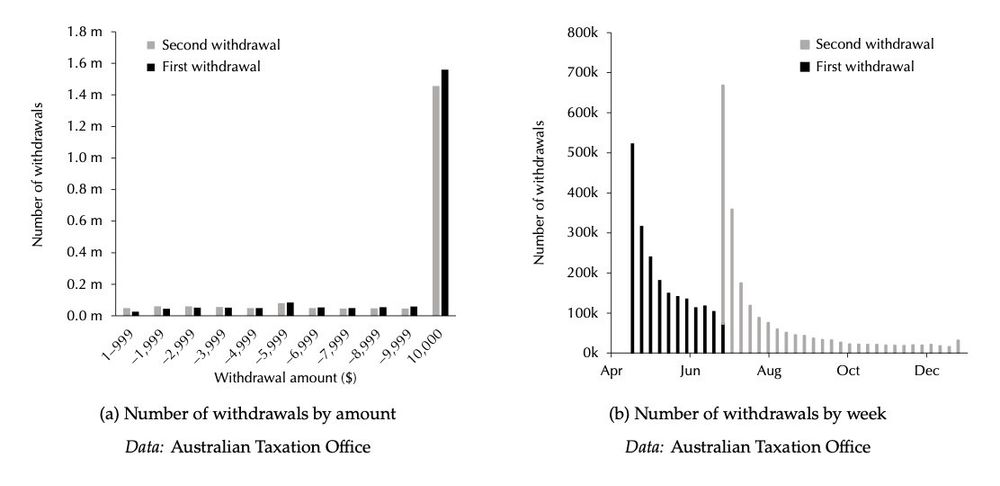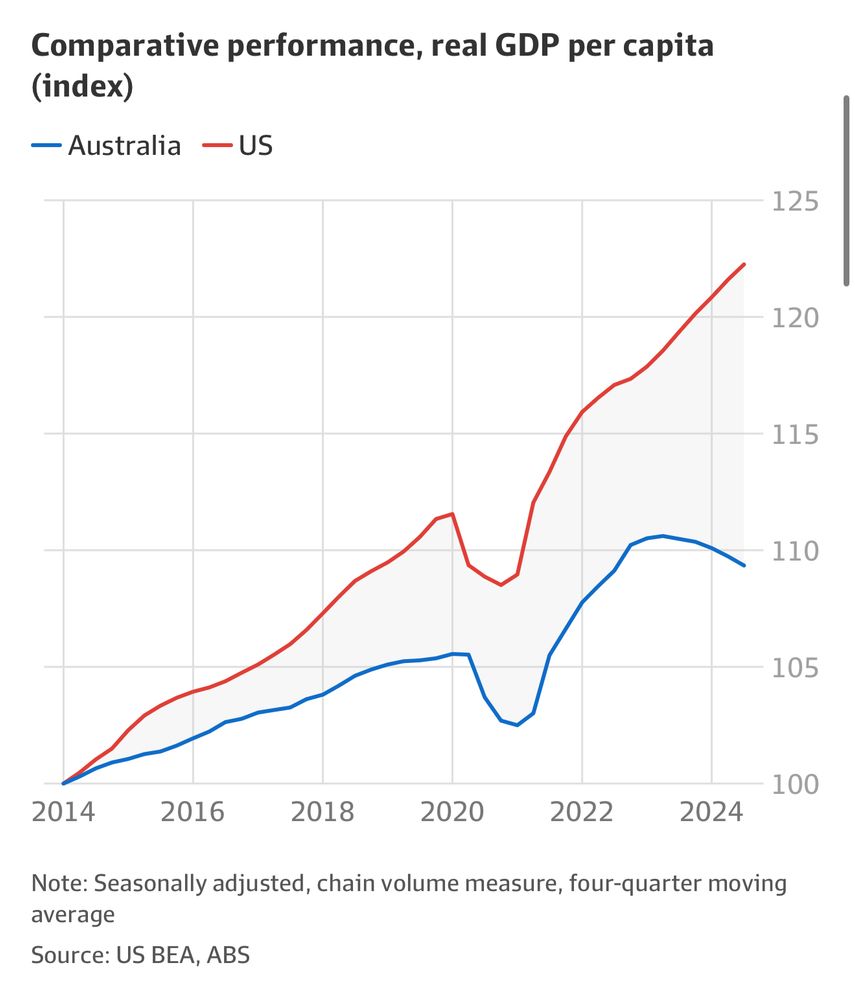
Thanks for getting this far! Please read the paper, circulate to those who might be interested, and let us know what you think.
/Fin
Thanks for getting this far! Please read the paper, circulate to those who might be interested, and let us know what you think.
/Fin
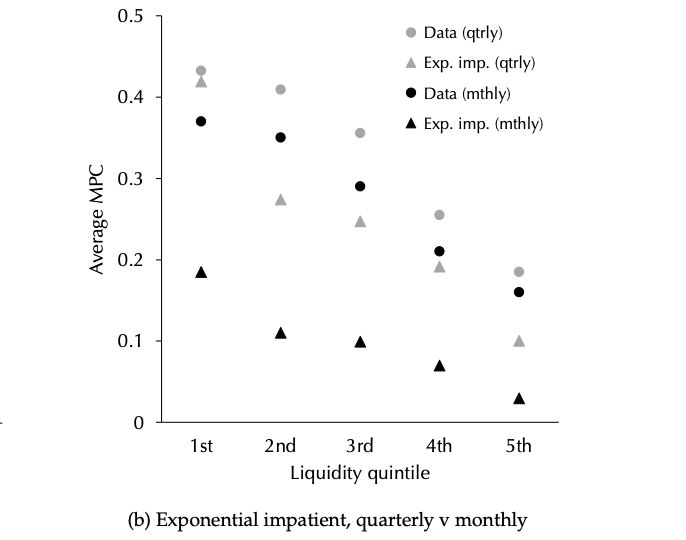
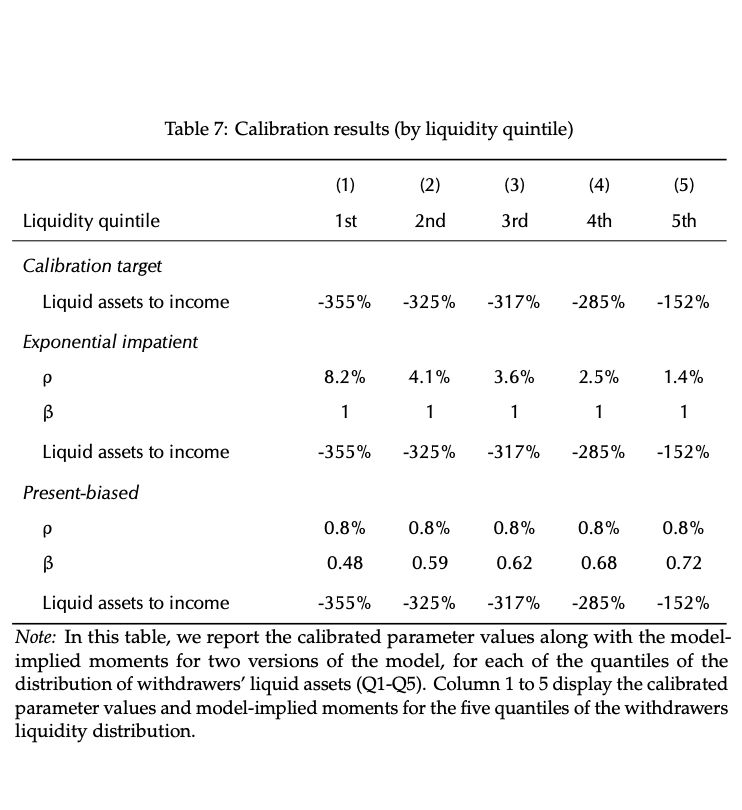

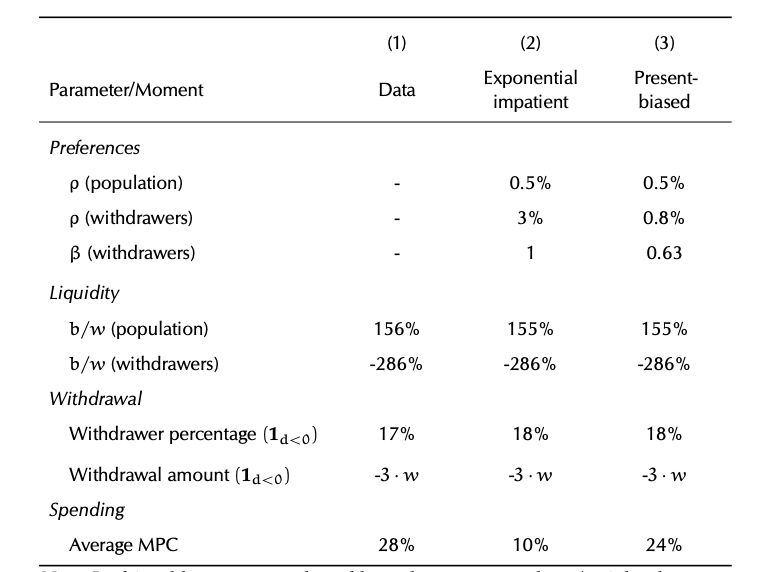

We compare two types of preferences in the model: heterogeneous exponential discounting (impatience) and heterogeneous hyperbolic discounting (present bias).
We compare two types of preferences in the model: heterogeneous exponential discounting (impatience) and heterogeneous hyperbolic discounting (present bias).
1) strong selection into withdrawing retirement savings on the basis of poor financial health; and
2) a very large and sharp spending response, positively correlated with selection.
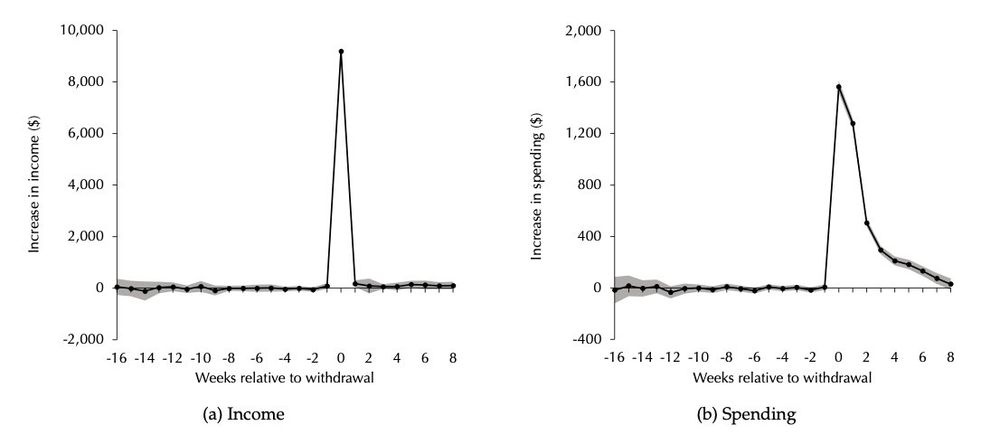
1) strong selection into withdrawing retirement savings on the basis of poor financial health; and
2) a very large and sharp spending response, positively correlated with selection.
